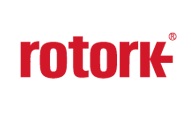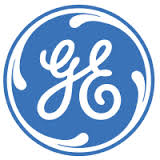 Process industries often depend on high performance valve actuation in harsh environments. Despite the difficult surroundings, process plants demand the latest technology, such as smart positioners, which allow technicians to use auto-calibration and simple diagnostics to commission and monitor their entire system at the push of a button. In many cases, the valve, actuator and smart positioner package is exposed to extreme temperatures, dirty conditions and other challenges such as high vibration.
Process industries often depend on high performance valve actuation in harsh environments. Despite the difficult surroundings, process plants demand the latest technology, such as smart positioners, which allow technicians to use auto-calibration and simple diagnostics to commission and monitor their entire system at the push of a button. In many cases, the valve, actuator and smart positioner package is exposed to extreme temperatures, dirty conditions and other challenges such as high vibration.
Most instrumentation positioners would fail quickly when subjected to these harsh environments. For example, smart positioners require internal electrical components which are extremely vulnerable at high temperatures and may prematurely fail when exposed. Young Tech Company (YTC) has developed two smart positioner products to thrive under these conditions which have paved the way to expansion and growth in tough process control applications.
Remote sensing unit positioners:
The YT-3301 introduced the concept of isolating and detaching the sensing feedback portion of the positioner from the main control housing. The sensing unit accurately detects the position of the valve stem and provides a feedback signal to the main housing. This dual unit design allows the operator to locate the precision electronics elements at a considerable distance from the valve environment, providing the best of both worlds – precision engagement at the point of valve movement and a clean, dry and ambient temperature for the electronics. This also facilitates mounting multiple control housings in close proximity for convenient and time saving monitoring and adjustment of valves in the plant.
Triple module remote positioners:
Remotely mounting the sensing unit provides dramatically improved reliability and performance, but at longer distances between the sensing unit and the control housing pneumatic signal loss may occur. In extreme situations this could lead to hunting and oscillation of the electronics and reduced valve and actuator positional stability.
To assure superior performance in these difficult applications, YTC has developed the YT-3302 Positioner. With this product a third module, housing the driving components of the pilot valve and torque motor assembly, is mounted at an intermediate location between the remote sensing unit and the main control unit. Accordingly, the three modules are the sensing unit, driving unit and control housing. As the sensing unit contains the most robust components and the control the most sensitive, this configuration delivers higher performance with dramatically increased positional accuracy.
Added benefits include the ease of maintenance for each of the modules and the ability to gang mount modules at convenient locations. Standardisation of modules and components also facilitates spare part simplification and inventory cost reduction.
Zoom Lebron XI 11
 ABB’s Measurement and Analytics business has launched two new guides covering its services for flow calibration and valve testing. Available on request from
ABB’s Measurement and Analytics business has launched two new guides covering its services for flow calibration and valve testing. Available on request from  Throughout the company’s near-sixty year history, Rotork engineers have focussed on solving customers’ problems and developing new flow control solutions. Whilst some innovations can be adopted immediately, others demand thousands of hours of testing, assessment and certification before they can be offered to customers.
Throughout the company’s near-sixty year history, Rotork engineers have focussed on solving customers’ problems and developing new flow control solutions. Whilst some innovations can be adopted immediately, others demand thousands of hours of testing, assessment and certification before they can be offered to customers. Yokogawa Electric Corporation announces that it will be releasing a number of new UTAdvanced® series controllers on April 24. The new controllers include four DIN rail*1 mounting type controllers and one 1/8 DIN panel type program controller. This is part of Yokogawa's ongoing effort to expand its controller business by satisfying market needs and giving customers a greater range of choices.
Yokogawa Electric Corporation announces that it will be releasing a number of new UTAdvanced® series controllers on April 24. The new controllers include four DIN rail*1 mounting type controllers and one 1/8 DIN panel type program controller. This is part of Yokogawa's ongoing effort to expand its controller business by satisfying market needs and giving customers a greater range of choices. GE Measurement and Control, Inspection Technologies division, announced the issuance of two patents for the use of dual multi-axis robotic devices for parts inspection (U.S. Pat. No. 8,833,169 and UK Pat. No. 2497418B). The patents cover a robotic inspection system that uses a pair of cooperating, multi-axis robots mounted on linear slides to perform ultrasonic inspection of parts. Features described in these patents can be found in GE’s Hydrastar ultrasonic inspection product.
GE Measurement and Control, Inspection Technologies division, announced the issuance of two patents for the use of dual multi-axis robotic devices for parts inspection (U.S. Pat. No. 8,833,169 and UK Pat. No. 2497418B). The patents cover a robotic inspection system that uses a pair of cooperating, multi-axis robots mounted on linear slides to perform ultrasonic inspection of parts. Features described in these patents can be found in GE’s Hydrastar ultrasonic inspection product.